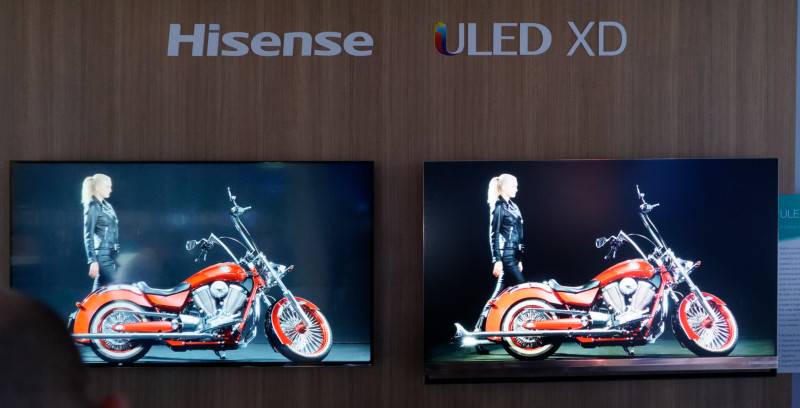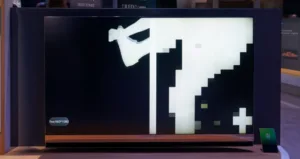In September of 2017, at the IBC show in Amsterdam, I had an epiphany. For nearly 20 years, I have said that ‘OLED has my heart, but LCD has my head’. However, at that event, in a side by side, I preferred the LCD – for the first time. Now the same technology is coming to TV. Maybe.

The technology I saw at IBC was from high end Japanese monitor maker, Eizo, which was showing a new LCD monitor, based on a special panel from Panasonic, that has 1,000,000:1 contrast to give the same deep, deep black as OLED, but with the ability to produce the high brightness and, more importantly, the high colour volume associated with good LCDs. Eizo showed the monitor side by side with a Sony broadcast monitor based on OLED. At low brightness, they were similar but once the Sony got to its design limit brightness (indicated by a red light coming on), the LCD continued to look better as brightness increased, while the OLED really started to look poor. (Eizo Planning CG3145 High Contrast Monitor Shipment)
Sony was clearly stung by this technology (which was also adopted by several other broadcast monitor bands) and, as we reported from IBC in 2018, introduced a monitor based on a similar panel from Panasonic (Sony, of course, claims it has some special technology that is slightly different). The company also told us that it was no longer developing OLED broadcast monitors, but concentrating on the LCD type (while continuing to supply OLED products to those that love them) That was big news to me. (Sony Moves from OLED for Monitoring)
The key to this fantastic performance was an architecture that adds a second LCD behind the ‘normal’ one. The new LCD is a monochrome panel that modulates the backlight. The modulation panel is used in place of using an addressable backlight solution, to achieve contrast of 1,000:1. The front LCD also has 1,000:1 contrast and so the system contrast is around 1,000,000:1.
This is not a new idea. At CES a number of years ago (I need to look back in my database!), Sharp showed a panel with that level of contrast although it didn’t talk about the technology. I ruminated on this overnight, after seeing it, and went back to ask if they had a double panel. They wouldn’t confirm, but the broad grins from the engineers suggested that I had guessed right! Sharp didn’t bring this to market, as far as I am aware. (I bumped into Ross Young of DSCC and once of DisplaySearch while looking at a TV at CES and he told me that Brightside, the first company to make an HDR display and later bought by Dolby, used the same concept in development, so the idea has been around for a long time).
Anyway, at CES this year, the news was that several companies were showing concept TVs using this approach. Hisense was the most visible, but I also spotted one at Skyworth – there were probably more. Hisense had both a full TV and also a demonstration system that had the front LCD removed and showed a split backlight, one side with a FullHD mono LCD for the modulation and the other with regular local dimming. The idea of using a FullHD one rather than a full resolution one seems good to me as it must reduce issues of the criticality of alignment and possible viewing angle issues.
Hisense had a split screen showing a footballer. On the left is the backlight modulated by the LCD – on the right, typical zone-based dimming. Image:Meko
 This was a complete TV comparison of a regular FALD LCD TV (left) and the dual layer version (right). Image:Meko
This was a complete TV comparison of a regular FALD LCD TV (left) and the dual layer version (right). Image:Meko
The development shows the potential for LCD to continue to improve in quality. Now, there are downsides, of course. The technique will add cost and, perhaps more critically, reduce the transmission efficiency of the LCD which may make it difficult to get power consumption down to the levels needed to be successful in the TV business. On the other hand, if you need extra glass, that will help to absorb some of the surplus panel capacity that will be around for the next few years. (and Corning is likely to be happy about this development!)
On the topic of extra layers, in its suite at CES, LG Display was also showing a transparent OLED that had an LCD layer behind that provided the black. It’s a ‘dirtly little secret’ of transparent displays that they can’t show black. So LG uses a blocking layer to allow the OLED to be transparent or to operate as a conventional display with black as well. Like the dual layer TVs, it was just a ‘technology concept’, but an interesting one, never the less. Bob Raikes

